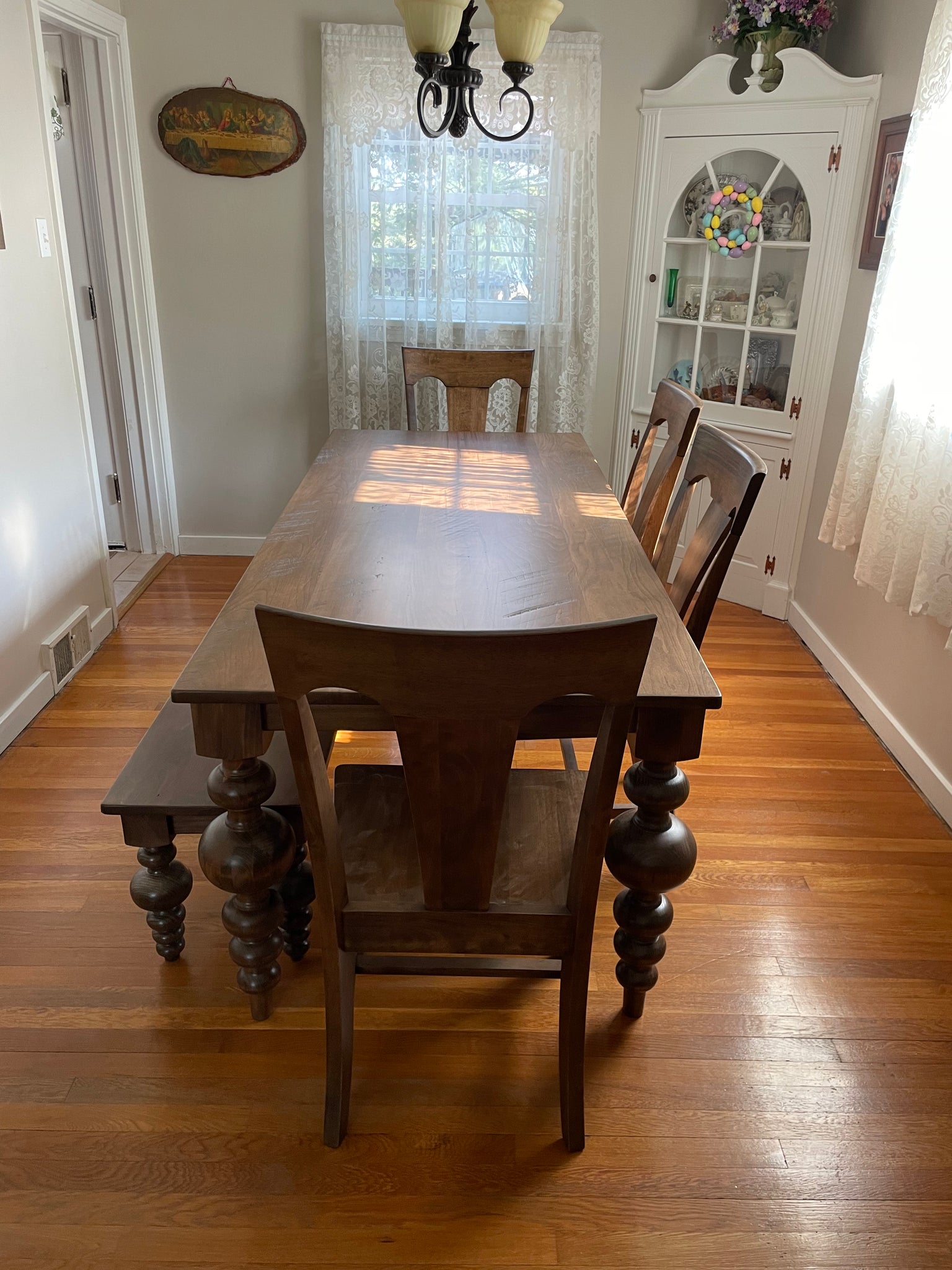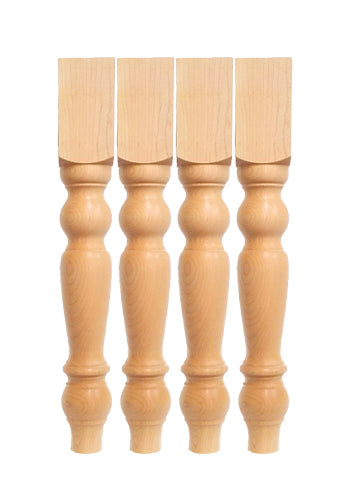Discover Affordable Style in High-Quality Dining Table Legs Wood
Key Factors to Remember for Table Legs Timber Choices
When choosing wood for dining table legs, several crucial factors require careful consideration to make sure both capability and aesthetic appeal. The selection of wood type, identified by its sturdiness and unique grain patterns, plays an essential function in the total layout and long life of the item. In addition, one must contemplate upkeep needs and the ecological ramifications of sourcing products. As these elements intertwine, they dramatically influence the last result of your table. Nonetheless, comprehending the nuances of each variable can be complicated, causing important decisions that merit additional expedition.
Wood Types and Characteristics
When choosing timber for eating table legs, it is necessary to understand the one-of-a-kind features of different wood types. Various timbers offer distinctive benefits and negative aspects, influencing both the resilience and visual allure of the ended up product.
Oak, understood for its remarkable longevity, additionally includes a prominent grain that can add personality to the table. Cherry wood, with its rich color that deepens over time, supplies a luxurious look yet might require more maintenance to stop scratches.
On the other hand, softwoods like pine and fir are extra budget-friendly and simpler to deal with, yet they are much less sturdy than woods. Pine is lightweight and features a cozy, rustic look, making it a favored selection for informal eating settings. It is more vulnerable to scratches and damages.
Understanding these qualities will certainly help in making a notified choice to ensure the legs of the dining table fulfill both aesthetic and practical requirements.
Grain Patterns and Looks
The timber's grain is not just an aesthetic characteristic; it conveys a distinct individuality and appeal to each piece. Various timber types display unique grain patterns, varying from the straight lines of maple to the intricate swirls of oak and the striking figure of walnut.
In addition, the orientation and scale of the grain can influence the viewed dimension and beauty of the table. Bigger, extra noticable grains may offer a bold, significant effect, while finer, subtler grains can develop an improved, downplayed appearance. Furthermore, the completing procedure can further enhance these patterns, stressing the all-natural beauty of the wood and highlighting abundant shades.
Ultimately, the option of grain pattern must balance with various other design elements, such as the tabletop and surrounding furniture, guaranteeing a natural aesthetic that elevates the dining experience. Thoughtful option of timber grain not just adds to the table's elegance however additionally reflects the owner's preference and design.
Longevity and Toughness
The resilience and toughness of eating table legs are critical factors to consider for making sure durability and stability in any dining space. Selecting the appropriate timber is essential, as various species display varying levels of resilience. Hardwoods such as maple, oak, and cherry are typically favored for their fundamental strength and resistance to put on. These products not only withstand everyday usage yet look at this now likewise support heavy tons, making them excellent for eating tables that frequently fit several diners. Dining Table Legs Wood.

Inevitably, buying top quality wood and robust construction approaches will yield a table that stands the test of time, while giving a trustworthy foundation for plenty of dishes shared among friends and family. Prioritizing resilience and strength guarantees that your table stays practical and visually pleasing for several years to find.
Maintenance and Care
Appropriate maintenance and care are vital for preserving the sturdiness and stamina of table legs made from wood. Regular cleaning is crucial; making use of a soft, wet cloth ensures that dirt and debris do not collect, which can bring about scrapes and monotony. It is advisable to prevent rough chemicals or unpleasant products that can harm the surface.
In addition, applying a suitable wood gloss or wax periodically can help preserve the luster and secure the timber from dampness and spills. Nevertheless, it is crucial to comply with the manufacturer's suggestions regarding the sort of product to make use of, as certain coatings may respond adversely to certain chemicals.
Moisture and temperature level changes can additionally influence wood table legs, creating them to warp or fracture. It's best to place the table away from direct sunshine and warmth sources. Dealing check my reference with these quickly can stop more damages. if the table legs have any type of dents or scrapes.
Finally, regularly inspecting the joints and screws for tightness is crucial to maintain structural stability (Dining Table Legs Wood). By adhering to these upkeep techniques, house owners can ensure their wood eating table legs stay attractive and useful for several years to come
Ecological Factors To Consider
When choosing timber for eating table legs, it's necessary to take environmental considerations into account. The sourcing and sustainability of timber are paramount in reducing ecological impact. Selecting timber from licensed sources, such as those backed by the Forest Stewardship Council (FSC), makes sure that the wood is gathered sensibly, promoting forest preservation and biodiversity.

In addition, regional sourcing of timber decreases transportation emissions, sustaining neighborhood economies while lessening environmental effect. It is also advisable to be aware of the timber's treatment and completing processes, as specific chemicals can be hazardous browse around here to both human health and the environment. By focusing on sustainable timber selections, consumers can add to environmental conservation while delighting in the resilience and charm of their table legs.
Final Thought
In final thought, choosing wood for eating table legs necessitates careful factor to consider of numerous aspects, consisting of wood kinds, grain patterns, and durability. Upkeep needs and ecological sustainability more impact timber choices, highlighting the significance of sourcing from licensed or redeemed materials.
When choosing timber for dining table legs, numerous critical elements necessitate careful consideration to make sure both performance and visual charm.Correct upkeep and treatment are essential for protecting the toughness and stamina of dining table legs made from wood.When choosing wood for dining table legs, it's vital to take environmental considerations into account. By focusing on lasting wood choices, customers can add to ecological preservation while appreciating the resilience and elegance of their dining table legs.
In final thought, choosing timber for dining table legs demands careful factor to consider of different elements, consisting of timber kinds, grain patterns, and durability. Dining Table Legs Wood.